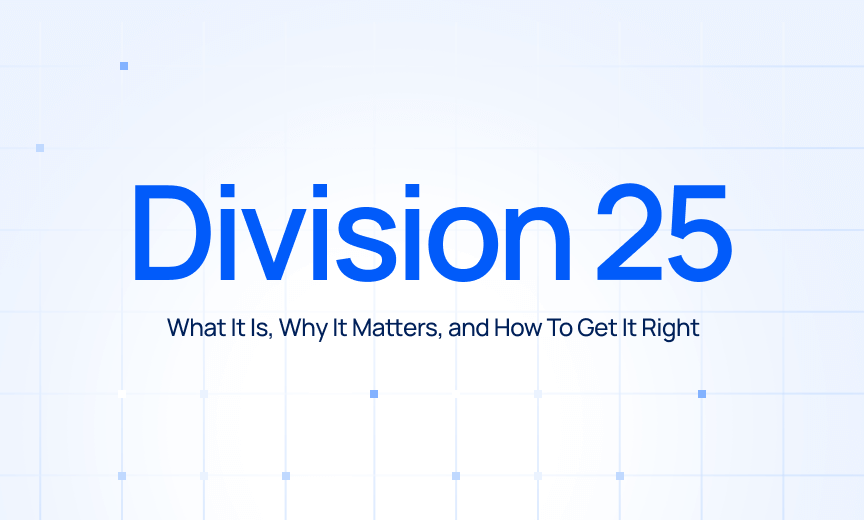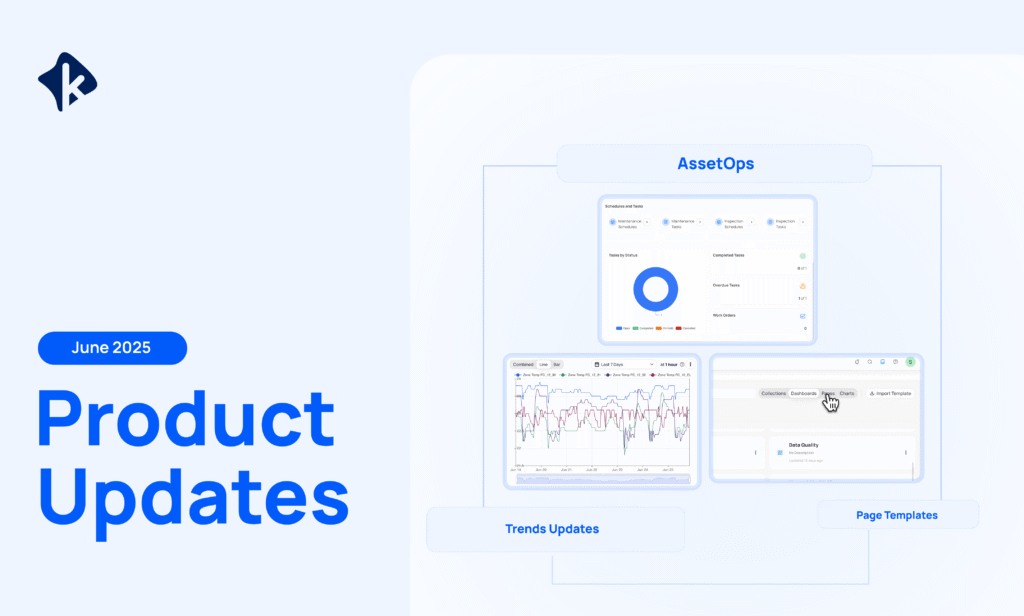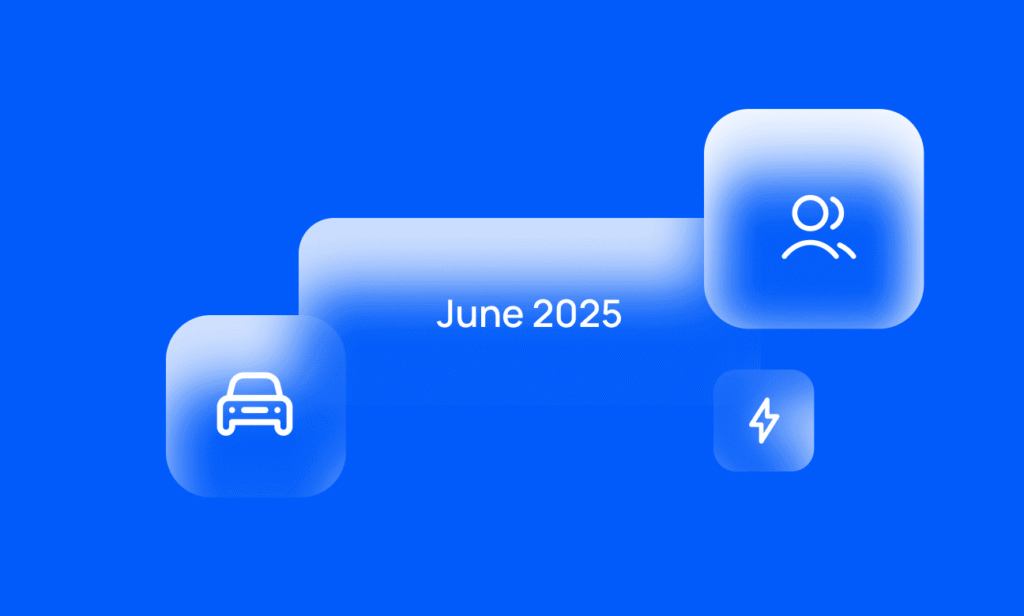By Ardit Fetahu
On this page
Sign up to our newsletter
Subscribe to receive the latest blog posts to your inbox every week.
By subscribing you agree to with our Privacy Policy.
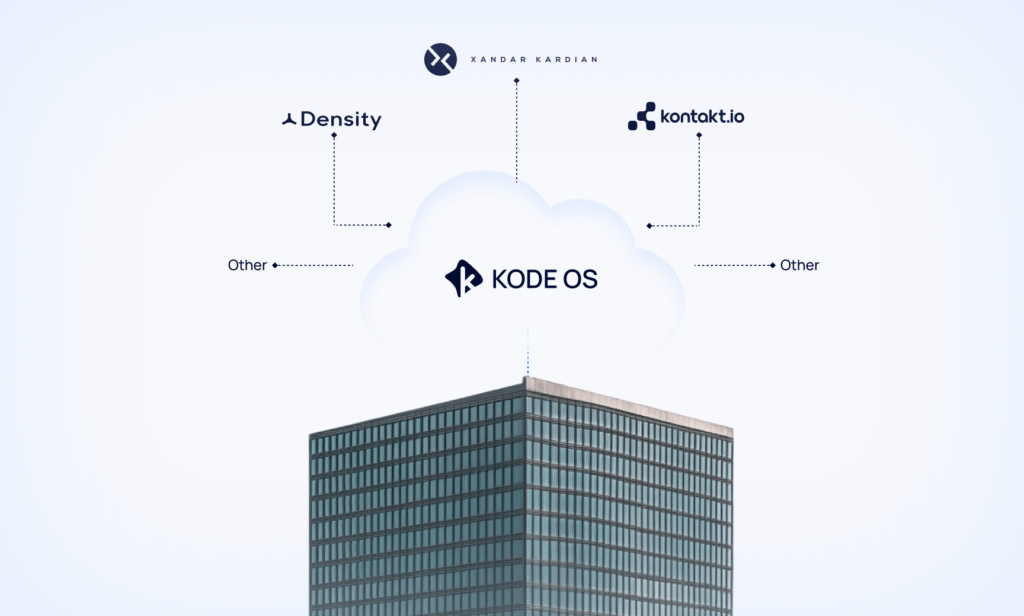
As businesses navigate the evolving landscape of work environments, a prominent trend emerges: the efficient resizing of office spaces. In response to this challenge, KODE OS steps forward as a simple solution, offering seamless integration with various occupancy sensor vendors such as Xandar, Fyma, Kontakt.io, Density.io, Disruptive Technologies, and more. The open architecture of this integration not only breaks free from the constraints of a single vendor, but also empowers organizations with unparalleled flexibility in managing their real estate portfolios.
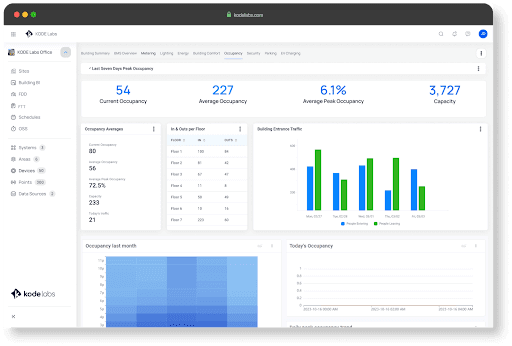
The power of seamless integration
KODE OS effortlessly integrates with multiple occupancy sensors, fostering interoperability through both cloud-based and local-based connections. The accompanying image illustrates the simplicity and effectiveness of this integration, showcasing the system’s compatibility with a diverse array of sensors.
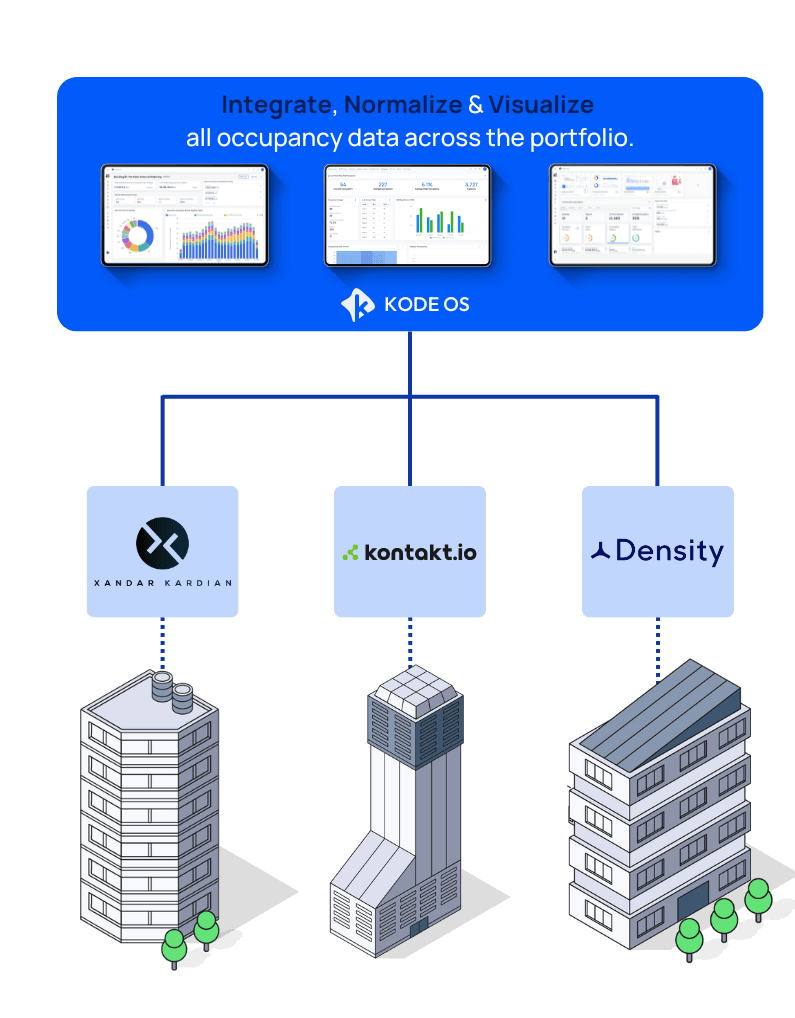
Normalization of data
A distinguishing feature of KODE OS is its capacity to clean and organize data from all integrated sensors, regardless of their type. This process is known as data normalization and ensures that all stakeholders receive a unified view of occupancy across their entire real estate portfolio.
Data-driven decision making
By providing a holistic view of occupancy details across an entire real estate portfolio, KODE OS empowers decision-makers with comprehensive insights into space utilization and average occupancy, laying the foundation for informed choices in right-sizing office spaces.
With KODE OS, organizations can identify underutilized spaces, pinpoint peak occupancy times, and discern overall trends. This wealth of information facilitates the optimization of office layouts, contributing not only to increased efficiency but also substantial cost savings associated with better space utilization.
Leveraging the data for enhanced portfolio use cases
With the integration of occupancy sensors, and other systems within KODE OS, additional use cases can be implemented to enhance the management of the portfolio, such as:
- Automation of work orders based on occupancy with a CMMS integration.
- Optimization of cleaning schedules with a CMMS integration.
- Reducing equipment run times with a HVAC system integration.
- Comparing building occupancy with energy consumption with utility provider integration.
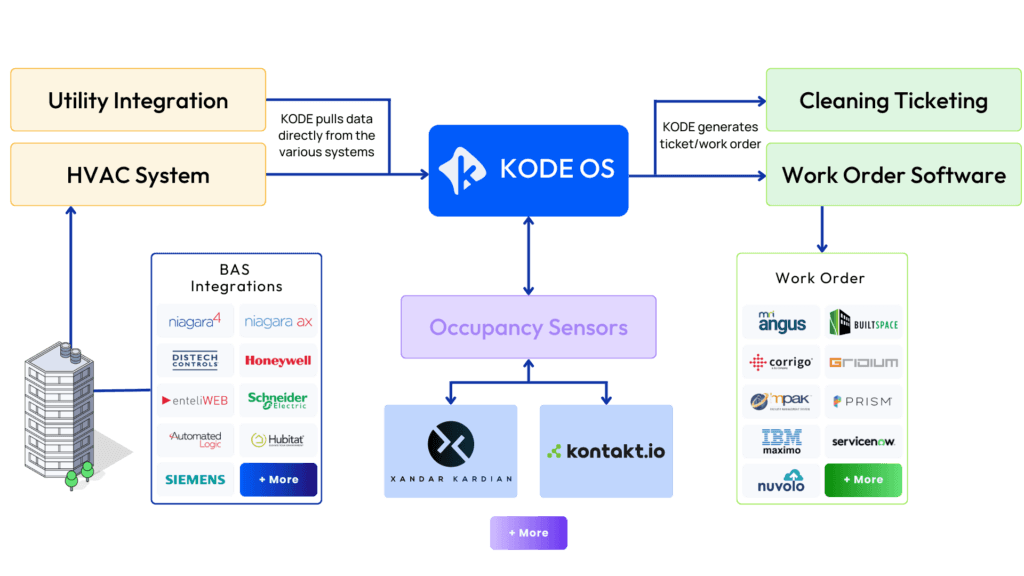
Benefits based on specialty
Asset Manager
- Office-level: For the Asset Manager focused on office-level considerations, the priority lies in understanding occupancy levels to predict potential expansions or contractions in employee space usage or vacancies.
- Portfolio-level: At a broader portfolio level, the Asset Manager desires access to both historical and real-time data trends on space occupancy and utilization. This includes insights into people counting levels at the portfolio, region, building, and common space types.
Building Manager
The Building Manager requires access to detailed historical and real-time occupancy and people counting data across multiple levels, from portfolio-level to desk-level. The inclusion of thresholds-driven alerts and entry/exit times, empowers data-driven decision making for effective space planning at various scales.
Facility Manager
The Facility Manager focuses on optimizing thermal comfort based on actual and forecasted occupancy levels. Real-time data on occupancy trends across different areas within the portfolio is essential for fine-tuning environmental conditions, ensuring comfort while minimizing energy waste.
Property Manager
Lastly, the Property Manager seeks a comprehensive understanding of occupancy trends and real- time levels in common areas across buildings.
Summary
Each stakeholder collectively emphasizes the need for a sophisticated system that provides granular insights into space occupancy, utilization, and trends. The goal is to make informed decisions that align with both operational efficiency and tenant satisfaction, ensuring that spaces are not only optimized but also tailored to meet the evolving needs of occupants.
Ready to see how KODE OS can optimize your portfolio? Discover more by booking a demo.

